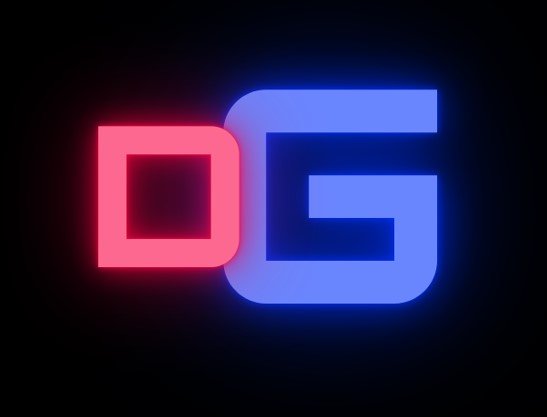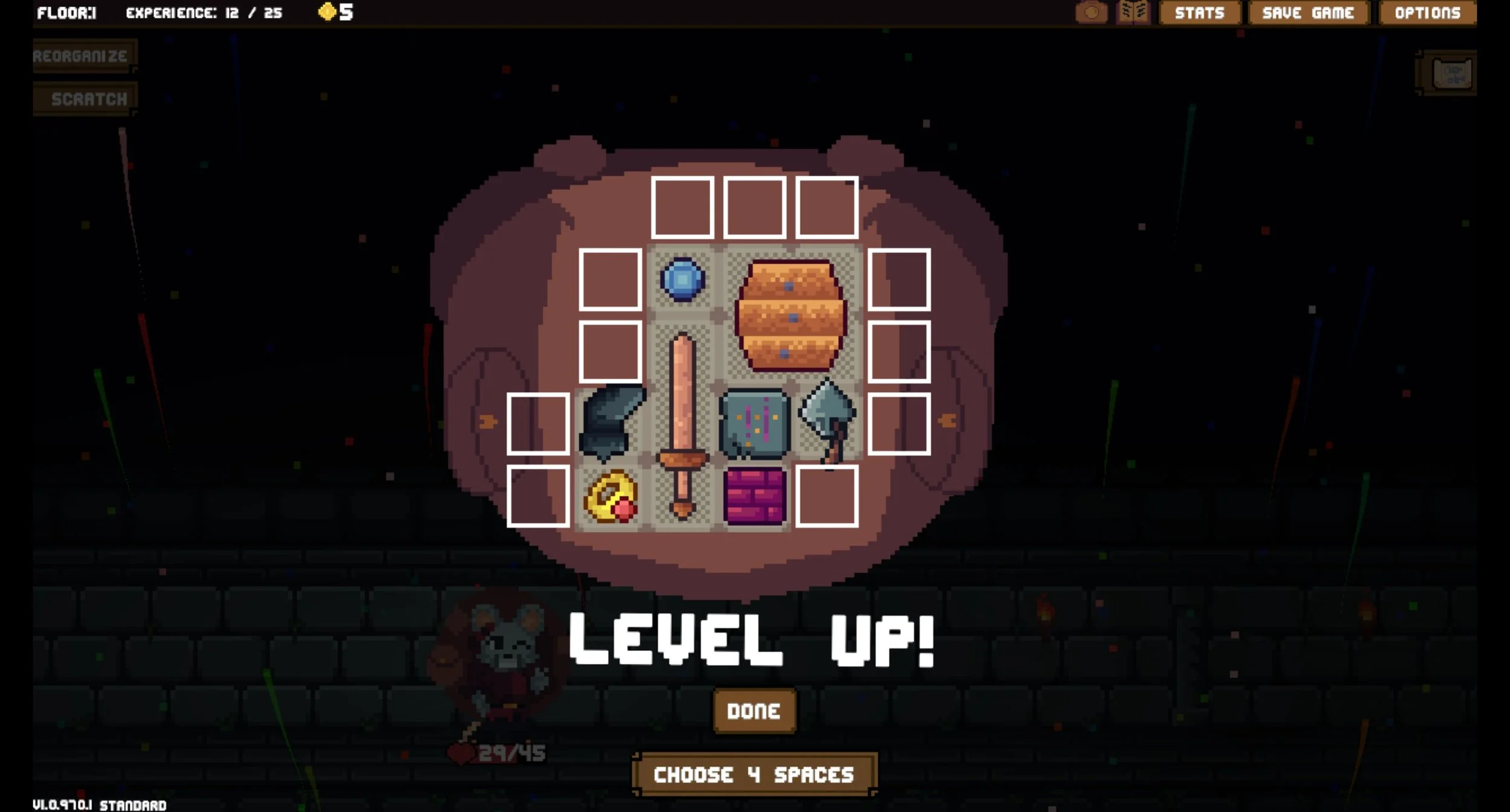Backpack Hero Review
Do you even Tetris? If you have ever tackled the task of packing a suitcase or loading up the car for a family trip like you would a game of Tetris then I have the game for you. Throw in some Slay the Spire with a touch of Moonlighter, and I present…
Developed by Jaspel (@thejaspel1), Backpack Hero is an inventory management roguelite. A what?? You know how deck-builders focus on a deck of cards and strategizing what to use and when? Well, inventory management has you sorting your inventory (hence, backpack) to defeat enemies in various dungeons. You play as Purse, an adventurous mouse who finds a magical bag that can grow in size and be sorted in mysterious ways. Despite the objections of her father, Purse wants to delve deeper into the dungeons, find out what happened to her mother who disappeared, and help rebuild her village, Haversack Hill, which was ransacked by the King of Orderia.
Upon entering your first dungeon, you are presented with a few items and an empty backpack. You can play around here with the sorting (items can be rotated) but they all should just fit. The dungeon map is fairly easy to navigate. If you are playing on PC, a controller can be used but the game can be completely controlled with just the left mouse button. Clicking a location on the map will move Purse to that spot unless an enemy is blocking the path forcing a combat encounter. If you have played Slay the Spire, combat will look relatively similar. Purse appears on the left side of the screen and enemies appear in a row across the right side of the screen. Health for both parties can be seen as well as the planned move for enemies. Clicking items in your backpack “uses” them and consumes energy. Hovering over an item displays a card similar to the many deckbuilding games out there.
Your turn ends when you have no energy or no more actions to make. Defeating the enemy nets you some experience and a choice of items. If the experience is enough to level up Purse, you can choose additional inventory slots to expand your backpack. The items available after combat can be increased and improved upon as you progress further in the story. Items can be offensive or defensive but as long as you can fit them in your bag, they can be collected and used. Outside of combat, inventory can be rearranged freely. In combat, it will cost you 3 energy (unbuffed, Purse only has 3 energy). It is rare but sometimes an item may drop in combat and the game will tell you to rearrange your inventory to pick it up. You the player have to weigh the item’s worth versus taking no action for one turn. There will be many runs where you just fit items in wherever space allows but just as many runs where you have to be meticulous about what goes where.
There is only one exit to the next floor of each dungeon but the map only reveals itself as you move around. Except for some floors containing collapsing pathways, you can freely move about each dungeon before hitting that exit. Unless you are concerned about low health or your ability to defeat more enemies, exploring is generally more helpful than not. In addition to random drops of gold, experience, and health, you can find treasure chests (although some may be cursed) and helpful NPCs such as the merchant (gold found or earned from defeating enemies is used here) or blacksmith (you can choose to enhance an item in your inventory) or even play mini-games.
Upon reaching the 3rd floor of any dungeon, you are faced with a boss fight. Bosses are similar to the enemies you fought to get this far although they have significantly more health and many can summon minions. In the early goings of the game, defeating the first boss or being defeated will send you back to town with the only difference being the loot. Victory ensures all loot in your bag is kept plus the reward for clearing the dungeon. While losing is not ideal, you can choose to keep an item from your bag to bring back.
Tetris may be the name of the game while in the dungeons but hints of Moonlighter can be seen when Purse is in her town. Every bustling Metropolis (ok, maybe that is too ambitious) needs to start somewhere. After your first foray into the dungeon ends, you are greeted by a handful of villagers and the loot on your person, err mouse. You will be asked to build certain structures for the few villagers milling around. Structures, of course, require resources, of which you will have very, very little. For the most part, the game tells you what to build at first to get you started. Once you build a sawmill and some farms, building materials and food will naturally accumulate as you go on dungeon runs. More houses mean more people which leads to new structures needed. Eventually, treasure will be earned from dungeon runs but early on you will need to rely on the loot you brought back each run. You could sell it for a set amount of treasure or save it to be used for tasks. Tasks are provided from specific buildings and require some combination of resources and/or specific treasures. The resources will come naturally but sometimes, a task will call for a wand while other times, a rare wand. I do wish the game had a way of bookmarking a specific task so you could have some way of knowing if an item was safe to sell or not. Some tasks will unlock challenge runs. These runs have set parameters such as keeping a specific item in your bag at all times.
What could go wrong?
Completion of tasks adds loot to the available pool that is seen in the dungeon. Similar to Moonlighter, a failed run or an unlucky one with average loot just has you head right back for another run. It took me several runs before I realized that there is no reason to not fill my bags outside of an item that can cause conflict. For example, there is a weapon that does negative damage if near other weapons. Outside of items like this, you might as well grab it all as it will serve some use when you head back to town. Base building, as it were, is relatively simple in its use. Buildings have set tile requirements and cannot overlap. Some buildings like farms will increase resource gain based on the number present but the majority of buildings can be placed haphazardly around. Later on, building connected roads allows Purse to access each building’s task list from a central structure. Moving through the village is also probably the only area in the game where playing with the single click of a mouse falls to the superiority of a controller as you have to click to move versus just walking with the control stick.
Backpack Hero is an absolutely amazing and extremely unique gaming experience. Deckbuilding games will never be the same again with this fresh take on a proven formula. You get a sense of ownership versus just hoping to draw the best hand possible. Have you ever pulled off one of those UNO hands where you just drop like 12 cards in a row on everyone and win? That’s the level of satisfaction here when you figure out how to manage the perfect inventory. Personally, I hate base building but even I was excited to return to town after a run and see what new loot I could unlock. By the way, dungeon runs can be saved mid-run so those quick fixes you seek can be picked up on later when you have more time. Rolling credits, which can be done in 12-15 hours (some luck may be needed), does not need to be the end of your fun. Avoiding spoilers, Purse is not the only playable character, and each one has its own spin on the inventory management system. Those aforementioned challenge runs that you unlock also become available for quick runs and there is full mod support with an already impressive collection of Steam Workshop items. Backpack Hero may have flown under the radar in 2023 but that does not mean you should sleep on it in 2024. Hell, I may even double-dip and grab the game on Switch to experience it all over again.















